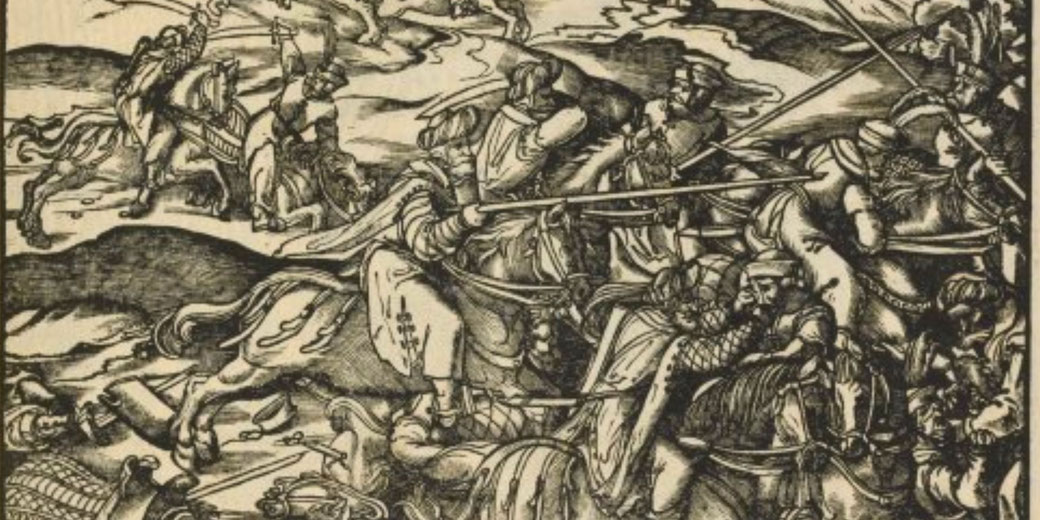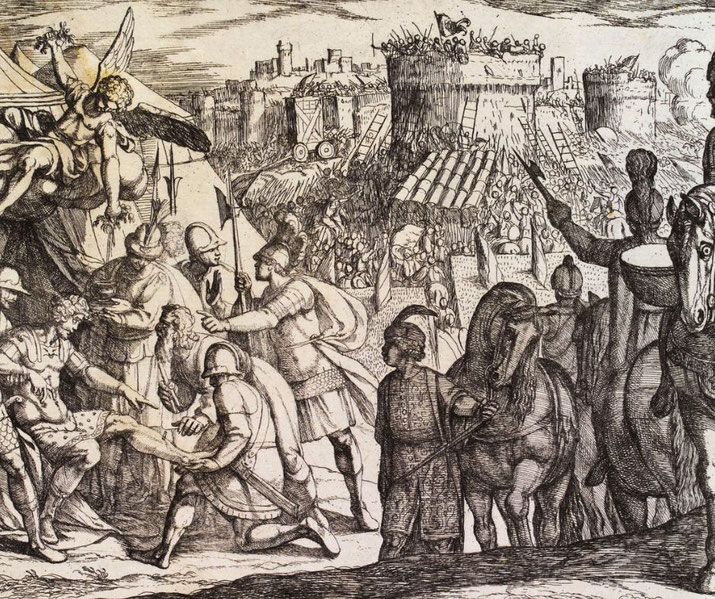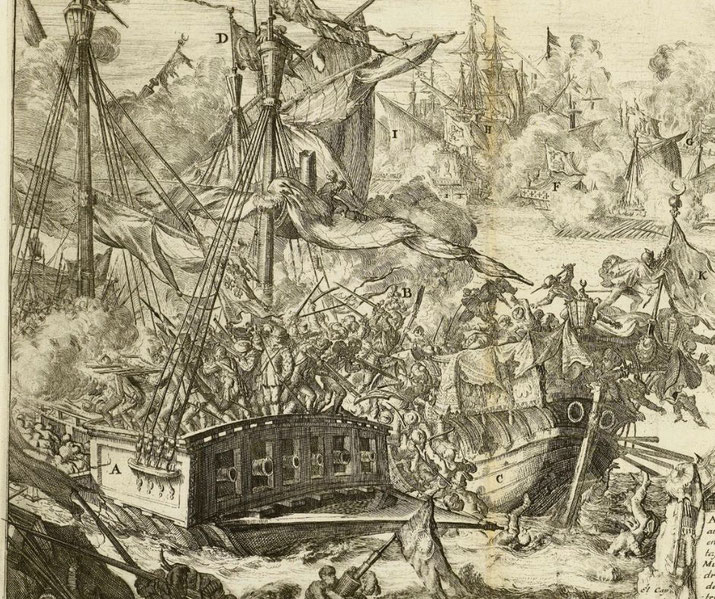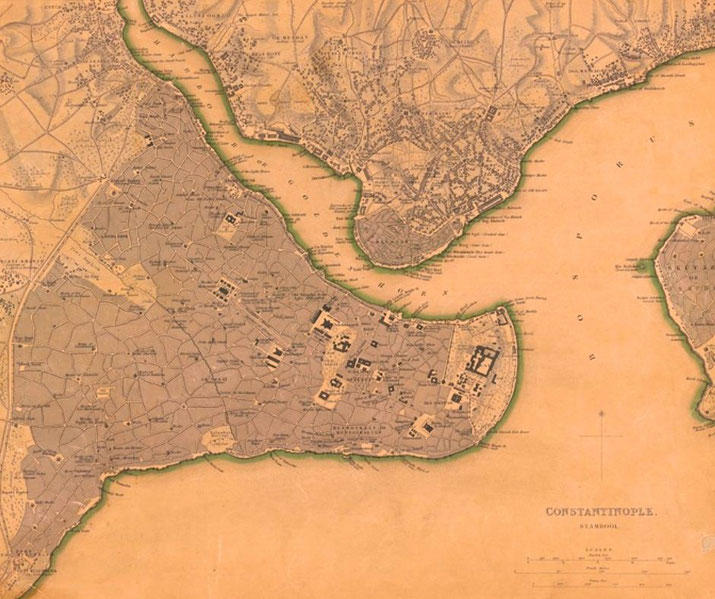The 10 most important battles of the Middle Ages

The Middle Ages—a time of knights, castles, and epic battles—continues to shape the modern world in surprising ways.
From the battlefield at Hastings to the fortified city of Jerusalem, the Middle Ages witnessed a series of military campaigns that determined the rise and fall of kingdoms and shaped the control of territory across Europe and the Near East.
But what were the greatest battles of this tumultuous period?
And which conflicts had the most significant impact on the course of history?
1. Battle of Hastings (1066)
The Battle of Hastings, fought on October 14, 1066, pitted William, the Duke of Normandy, against Harold Godwinson, the recently crowned King of England.
The stage was set when Edward the Confessor, the previous English king, died without an heir, leaving a power vacuum that both men sought to fill.
William claimed that Edward had promised him the throne, while Harold, the most powerful noble in England, was chosen by the English nobility.
The Normans landed on the southern coast of England before the two armies met near the town of Hastings.
Harold's forces were already exhausted from fighting another battle against the Norwegian king Harald Hardrada at Stamford Bridge just days earlier, who was a third claimant to the English throne.
Harold's army took a defensive position on Senlac Hill and the battle was a grueling affair that lasted from morning until dusk.
They formed a shield wall, a tactic that had served the Anglo-Saxons well in previous conflicts.
William's forces, however, were better equipped and more diverse, including archers and cavalry, which the Anglo-Saxons lacked.
After several failed attempts to break the shield wall, William feigned a retreat, drawing part of the English forces down the hill in pursuit.
This created gaps in the shield wall, which the Normans exploited, eventually leading to Harold's death—according to legend, from an arrow that struck him in the eye.
The Battle of Hastings had far-reaching consequences. It led to the Norman Conquest of England, fundamentally changing the country's language, culture, and governance.
The Normans introduced feudalism, built stone castles across the land, and commissioned the Domesday Book, an unprecedented census that provided a detailed account of the kingdom's resources.
The battle also had a profound impact on English law and laid the groundwork for the system of governance that would evolve into constitutional monarchy.
2. Siege of Jerusalem (1099)
The First Crusade, launched in 1096 with the blessing of Pope Urban II, aimed to reclaim the Holy Land from Muslim rule.
After a perilous journey across Europe and Asia Minor, the Crusaders arrived at the walls of Jerusalem, then controlled by the Fatimid Caliphate.
The city was a symbol of immense religious significance for Christians, Jews, and Muslims alike, and its capture would be a crowning achievement for the Crusaders.
The siege began on June 7, 1099, and lasted for a little over a month. The Crusaders faced formidable challenges, including a lack of supplies and the scorching heat of the Palestinian summer.
Despite these obstacles, they managed to construct siege engines, including a massive tower that allowed them to scale the walls.
On July 15, after days of relentless assault, the Crusaders broke through Jerusalem's defenses.
What followed was a brutal massacre, as Crusaders killed thousands of the city's inhabitants, regardless of age, gender, or religion.
The taking of Jerusalem was both a military triumph and a dark chapter in the annals of religious conflict.
Following the capture of Jerusalem, Godfrey of Bouillon was appointed as the ruler of the city, though he refused the title of king and styled himself 'Defender of the Holy Sepulchre.'
The capture of Jerusalem had a profound impact on the medieval world and beyond.
It established a Christian presence in the Holy Land, leading to the formation of the Kingdom of Jerusalem and other Crusader states.
These states would exist in a precarious balance of power with their Muslim neighbors for nearly a century, until Saladin's recapture of Jerusalem in 1187.
The event also intensified the animosity between Christians and Muslims, an enmity that would fuel subsequent Crusades and resonate through the ages.
Moreover, the First Crusade and the capture of Jerusalem ignited a sense of religious fervor and chivalric idealism that influenced European culture and thought for generations.

3. Battle of Manzikert (1071)
Fought near the town of Manzikert in what is now modern-day Turkey, the battle pitted the Byzantine Empire, led by Emperor Romanos IV Diogenes, against the Seljuk Turks, commanded by Alp Arslan.
Romanos, eager to halt the Seljuk incursions into Byzantine territory, led a large but poorly coordinated army into battle.
Alp Arslan, on the other hand, commanded a smaller but more cohesive force, skilled in the tactics of steppe warfare.
The Byzantine army was plagued by internal divisions and a lack of strategic focus, which Alp Arslan exploited to his advantage.
Using feigned retreats and ambush tactics, the Seljuks managed to lure the Byzantine units into disarray.
The turning point came when a portion of the Byzantine army, believing the battle lost, retreated in panic, leaving Romanos vulnerable.
The emperor was captured, and his forces were decimated. The defeat was not just a military disaster; it was a humiliation for the Byzantine Empire.
Romanos was released after a few days but was later deposed and blinded in a cruel twist of Byzantine politics.
The consequences of Manzikert were profound and far-reaching. The defeat exposed the vulnerabilities of the Byzantine Empire and opened the door for further Turkish invasions into Anatolia.
Within a few decades, much of the region would be lost by the Byzantines, leading to a decline in manpower and resources that the empire could never fully recover from.
The battle also marked the rise of the Seljuk Turks as a dominant force in the Middle East, setting the stage for the Crusades and the subsequent centuries of interaction between the Islamic world and Christian Europe.
4. Battle of Tours (732)
The Battle of Tours, fought in 732 near the city of Tours in modern-day France, is often cited as one of the most decisive conflicts in European history.
The battle pitted Charles Martel, the Frankish ruler, against an invading force from the Umayyad Caliphate, led by Abdul Rahman Al Ghafiqi.
At stake was nothing less than the future trajectory of Western Europe, as the Umayyad forces had been on a campaign of rapid expansion, having already conquered the Iberian Peninsula and moved into what is now France.
The Franks, under Martel, were one of the few remaining powers capable of halting this advance.
The Umayyads were confident, having a string of victories behind them, but they met their match in Charles Martel, a military leader of exceptional skill.
Martel chose his battleground carefully, positioning his troops on high ground and forming a defensive square formation.
The Umayyad cavalry, which had been so effective in open terrain, found it difficult to break the Frankish lines.
After repeated and unsuccessful charges, the Muslim forces began to waver.
The tipping point came when Martel's infantry managed to kill Abdul Rahman, causing disarray among the Umayyad ranks.
Many Muslim units started to withdraw and sensing the moment, the Franks launched a counter-attack and secured a monumental victory.
The Battle of Tours had a lasting impact on European history. It effectively halted the northward advance of Islam into Western Europe and solidified Charles Martel's reputation as a hero of Christendom.
His grandson, Charlemagne, would go on to establish the Carolingian Empire, laying the groundwork for the Holy Roman Empire and the eventual unification of much of Western Europe.
The battle also had religious and cultural implications, as it helped to preserve the Christian identity of Europe at a time when it was under serious threat.
For centuries, historians and scholars have debated the "what-ifs" surrounding the Battle of Tours, pondering how different the world might look today had the outcome been reversed.
5. Battle of Agincourt (1415)
Agincourt is one of the most celebrated military engagements in English history and a pivotal moment in the Hundred Years' War.
King Henry V of England, eager to reclaim territories in France and assert his claim to the French throne, led an army across the English Channel.
By the time they reached Agincourt, the English troops were exhausted, outnumbered, and suffering from disease.
They faced a French army that was superior in numbers and confident of victory.
Henry V, aware of his army's limitations, employed innovative tactics to level the playing field.
He chose a narrow battlefield flanked by woods, which restricted the movement of the French cavalry.
The English archers, who were armed with longbows, were positioned behind an angled wall of sharpened stakes, making it difficult for the French knights to charge without impaling their horses.
When the battle commenced, the French cavalry charged but were repelled by a hail of arrows.
The muddy conditions further hampered the French, who became easy targets for the English archers.
As the French infantry advanced, they found themselves funneled into a tight space, where they were cut down by English men-at-arms.
The result was a devastating defeat for the French and a stunning victory for the English. An estimated 6,000 to 10,000 French were killed, including many high-ranking nobles.
The Battle of Agincourt had far-reaching implications. It boosted English morale and helped give Henry V the leverage he needed to secure favorable conditions in the Treaty of Troyes (1420), which included his marriage to Catherine of Valois, the daughter of the French king.
The battle also exposed weaknesses in the French feudal system and military tactics, leading to reforms that would eventually turn the tide of the war in France's favor.
Moreover, Agincourt became a symbol of English courage and ingenuity, immortalized in literature and folklore.
William Shakespeare's play Henry V captures the essence of the battle and its significance, with the famous St. Crispin's Day speech extolling the virtues of those who fought "for England and St. George."
6. Battle of Lepanto (1571)
On October 7, 1571, in the Gulf of Patras, the Holy League, a coalition of Christian states led by the Spanish Empire and the Papal States, faced off against the Ottoman Empire, which had been expanding its influence across the Mediterranean.
Commanded by Don John of Austria, the half-brother of King Philip II of Spain, the Holy League assembled a formidable fleet of around 212, including Venetian galleys and the famed Spanish tercios, infantry units that had proven their mettle in previous conflicts.
The Ottomans, led by Ali Pasha, also fielded a powerful navy of approximately 250 vessels, confident in their ability to maintain their maritime dominance.
The two fleets met in a clash that was as much a battle of wills as it was of military might.
Both sides employed galleys powered by oarsmen, but it was the introduction of heavy artillery on the decks of the Christian ships that proved to be a game-changer.
As the fleets engaged, the Holy League's cannons unleashed devastating volleys, crippling the Ottoman ships and turning the tide of battle.
Hand-to-hand combat ensued as soldiers boarded enemy vessels, and in the chaos, Ali Pasha was killed, further demoralizing the Ottoman forces.
By the end of the day, the Holy League had captured or destroyed over 200 Ottoman ships, while losing only a dozen of their own.
The Battle of Lepanto marked the end of Ottoman naval dominance and bolstered the confidence of Christian Europe.
The victory was celebrated as a triumph of the Christian faith, and Pope Pius V declared October 7 as the Feast of Our Lady of Victory, later renamed the Feast of Our Lady of the Rosary.
While the Ottomans would eventually rebuild their fleet, they would never again pose the same maritime threat to Christian Europe.

7. Battle of Grunwald (1410)
The Battle of Grunwald pitted the Teutonic Knights, a powerful military order that had carved out a state along the Baltic Sea, against a coalition led by the Kingdom of Poland and the Grand Duchy of Lithuania.
The Teutonic Knights, under Grand Master Ulrich von Jungingen, were confident of victory, bolstered by their reputation for military prowess and discipline.
On the other side, King Władysław II Jagiełło of Poland and Grand Duke Vytautas of Lithuania led a diverse force that included Polish knights, Lithuanian light cavalry, and various other allied contingents.
The battle, also known as the First Battle of Tannenberg in German and the Battle of Zalgiris in Lithuanian, was a complex and hard-fought affair, with both sides employing a mix of tactics and weaponry.
The Teutonic Knights initially seemed to have the upper hand, their heavy cavalry making an impact on the allied lines.
However, the Polish and Lithuanian commanders had prepared well, using the terrain to their advantage and employing feigned retreats to draw the Teutonic forces into unfavorable positions.
As the day wore on, the tide began to turn. The allied forces managed to surround the Teutonic Knights, and a final charge led by the Polish knights broke the enemy lines.
Ulrich von Jungingen was killed in the battle, and the Teutonic Order suffered catastrophic losses with around 8,000 men killed and a further 14,000 captured.
The Battle of Grunwald had a transformative impact on the region. It marked the beginning of the decline of the Teutonic Order as a major political and military power.
The victory also solidified the Polish-Lithuanian alliance, which would eventually lead to the formal union of the two states and the creation of one of the largest and most influential countries in Europe.
The battle became a symbol of national pride and resistance against foreign domination, especially for the Poles and Lithuanians.
8. Battle of Crecy (1346)
King Edward III of England had embarked on a campaign to assert his claim to the French throne, leading an army across the English Channel and laying siege to the French port of Calais.
The French, under King Philip VI, sought to intercept and destroy Edward's army, confident in their numerical superiority and the chivalric prowess of their knights.
However, what unfolded on the fields of Crécy would defy expectations and change the face of medieval warfare.
Edward III employed a revolutionary tactic that would become a hallmark of English military strategy: the use of the longbow.
English archers, positioned on a sloping hill and protected by obstacles like wooden stakes, formed the backbone of Edward's army.
When the French knights charged, they were met with a devastating hail of arrows that could penetrate armor at considerable distances.
The longbow's rate of fire also far exceeded that of the crossbows used by the French, creating a deadly imbalance.
The English also deployed early gunpowder weapons at Crécy, possibly making it one of the first European battles to feature cannons in the field.
The French cavalry charges became mired in confusion and disarray, further exacerbated by the muddy conditions and the onset of rain.
As the French lines crumbled, Edward's men-at-arms capitalized on the chaos, cutting down their disoriented foes.
The Battle of Crécy was a watershed moment in military history. It shattered the myth of the invincibility of the heavily armored knight and demonstrated the effectiveness of infantry and ranged weaponry.
The battle had immediate and lasting repercussions. It gave the English a foothold in northern France, leading to the successful siege of Calais, which would remain under English control for over two centuries.
The French were forced to reevaluate their military tactics and the very ethos of chivalry that had guided their aristocratic warrior class.
The Battle of Crécy also had a psychological impact, boosting English morale and confidence while sowing doubt and division among the French.
9. Battle of Hattin (1187)
The Battle of Hattin was fought on July 4, 1187, near the Sea of Galilee in present-day Israel.
It was a cataclysmic event that altered the course of the Crusades and set the stage for a new chapter in the history of the Holy Land.
The battle pitted the forces of the Kingdom of Jerusalem, led by Guy of Lusignan, against the Muslim army of the Ayyubid sultanate, commanded by the legendary Salah ad-Din, commonly known in the West as Saladin.
The Crusaders, confident in their fortified castles and the military orders of the Templars and Hospitallers, believed they could hold their own against the Muslim forces.
Saladin, however, had other plans. He aimed to recapture Jerusalem and unify the Muslim world under his banner.
The Crusaders made a series of tactical errors, including abandoning their advantageous position near a water source to march across arid terrain in the scorching heat.
Saladin seized the opportunity, harassing the Crusader army with his light cavalry and archers, cutting them off from water and supplies.
Exhausted, thirsty, and demoralized, the Crusaders were forced to make camp on the arid plateau near the Horns of Hattin, twin hills that offered little strategic advantage.
Saladin's forces set fire to the dry grass surrounding the Crusader camp, exacerbating their misery.
When the final assault came, the Crusader lines broke, and the battle turned into a rout.
Guy of Lusignan was captured, along with another 20,000 Crusaders including many nobles, and the relic of the True Cross, a Christian symbol carried into battle, was lost.
The captured relic was taken to Damascus and paraded through the city in triumph.
This battle was a devastating defeat for the Crusaders and paved the way for Saladin to recapture Jerusalem later that year, a loss that would inspire the Third Crusade led by Richard the Lionheart.
The battle also solidified Saladin's reputation as both a military genius and a chivalrous opponent, qualities that earned him respect even among his enemies.
For the Muslim world, Hattin was a moment of immense symbolic importance, a victory that demonstrated the possibility of unity and success against the Crusader states.
10. Siege of Constantinople (1453)
The Siege of Constantinople in 1453 was a monumental event that marked the end of one era and the beginning of another, not just for the Byzantine Empire and the Ottoman Turks, but for the world at large.
For over a millennium, Constantinople had stood as the capital of the Byzantine Empire, a bastion of Christianity and classical knowledge, its formidable walls never once breached by an invading army.
However, by the mid-15th century, the empire was a shadow of its former self, surrounded on all sides by the burgeoning Ottoman Empire.
Sultan Mehmed II, known as Mehmed the Conqueror, was determined to capture the city and make it the capital of his own empire.
Mehmed laid siege to Constantinople on April 6, 1453, with an army that vastly outnumbered the city's defenders, led by Emperor Constantine XI Palaiologos.
The Ottomans brought with them a series of technological innovations, most notably the use of massive cannons capable of battering the city's ancient walls.
Despite being outnumbered and outgunned, the Byzantines, along with a small contingent of Venetian and Genoese volunteers, put up a heroic defense, repelling multiple assaults and employing Greek fire, a form of medieval napalm, to thwart Ottoman ships trying to bypass the city's sea walls.
However, after weeks of relentless bombardment, a portion of the walls was finally breached on May 29.
The Ottomans poured into the city, overwhelming the exhausted defenders. Constantine XI himself was last seen fighting valiantly at the walls, his fate unknown.
The fall of Constantinople had profound and far-reaching consequences. It marked the end of the Byzantine Empire and the consolidation of Ottoman power under Mehmed II, who would go on to expand his empire into Europe, Asia, and Africa.
The city, later renamed Istanbul, became a center of Islamic culture and governance, while its Christian populace was subjugated or expelled.
The event also sent shockwaves through Christendom, leading to calls for new Crusades and intensifying the sense of conflict between the Christian and Muslim worlds.
Moreover, the fall of the city disrupted trade routes and led to an increasing exodus of Greek scholars to the West, contributing to the Renaissance.

What do you need help with?
Download ready-to-use digital learning resources
Copyright © History Skills 2014-2025.
Contact via email
With the exception of links to external sites, some historical sources and extracts from specific publications, all content on this website is copyrighted by History Skills. This content may not be copied, republished or redistributed without written permission from the website creator. Please use the Contact page to obtain relevant permission.





